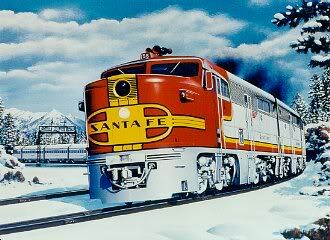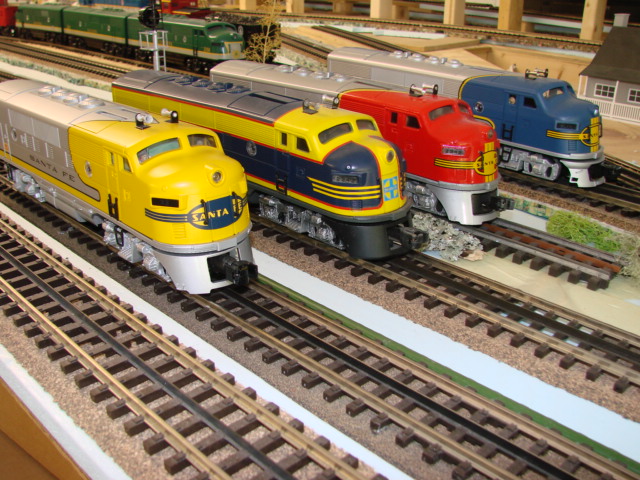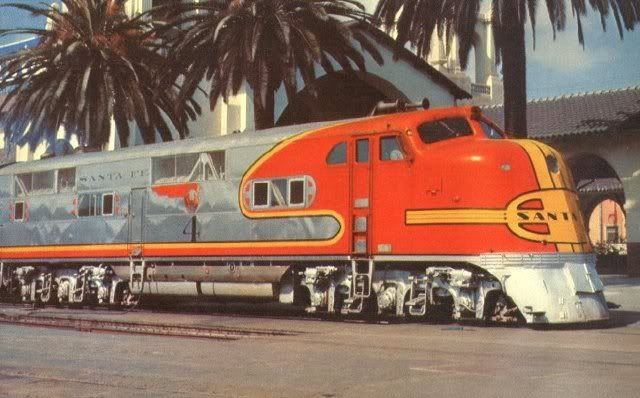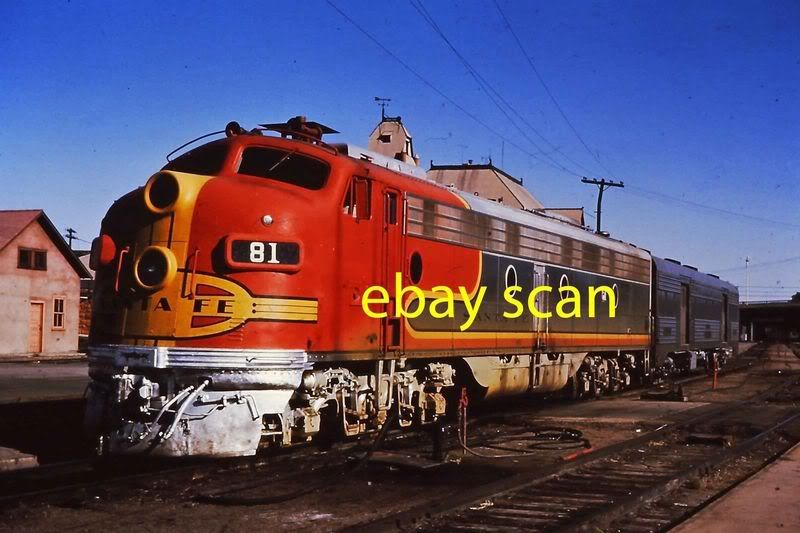quote:
Originally posted by Popsrr:
Number 90
I thought I remembered that ATSF ran the Yellow Bonnet to make sure that the public did not think the service on the Yellow was the same on the Red bonnet passenger trains. Maybe it had to do with a change in the passenger service?
Perhaps so, but it also saved a lot of money to just skip the red coat. Most people are surprised to learn that Santa Fe painted the entire warbonnet on the passenger units -- and the entire carbody on the freight F's -- yellow. The yellow was then masked and the black was applied and re-masked. Finally, they painted the red warbonnet over the yellow or the blue over the yellow on the cat whisker or cigar band freight schemes.
I have never personally seen anything in writing, but somewhere in the ATSF Historical Society archives, there is surely some record of how many gallons of DuPont red Duco lacquer it took to paint a rednose F3 or F7. Was it the image? The money? Perhaps we'll know for sure someday.














